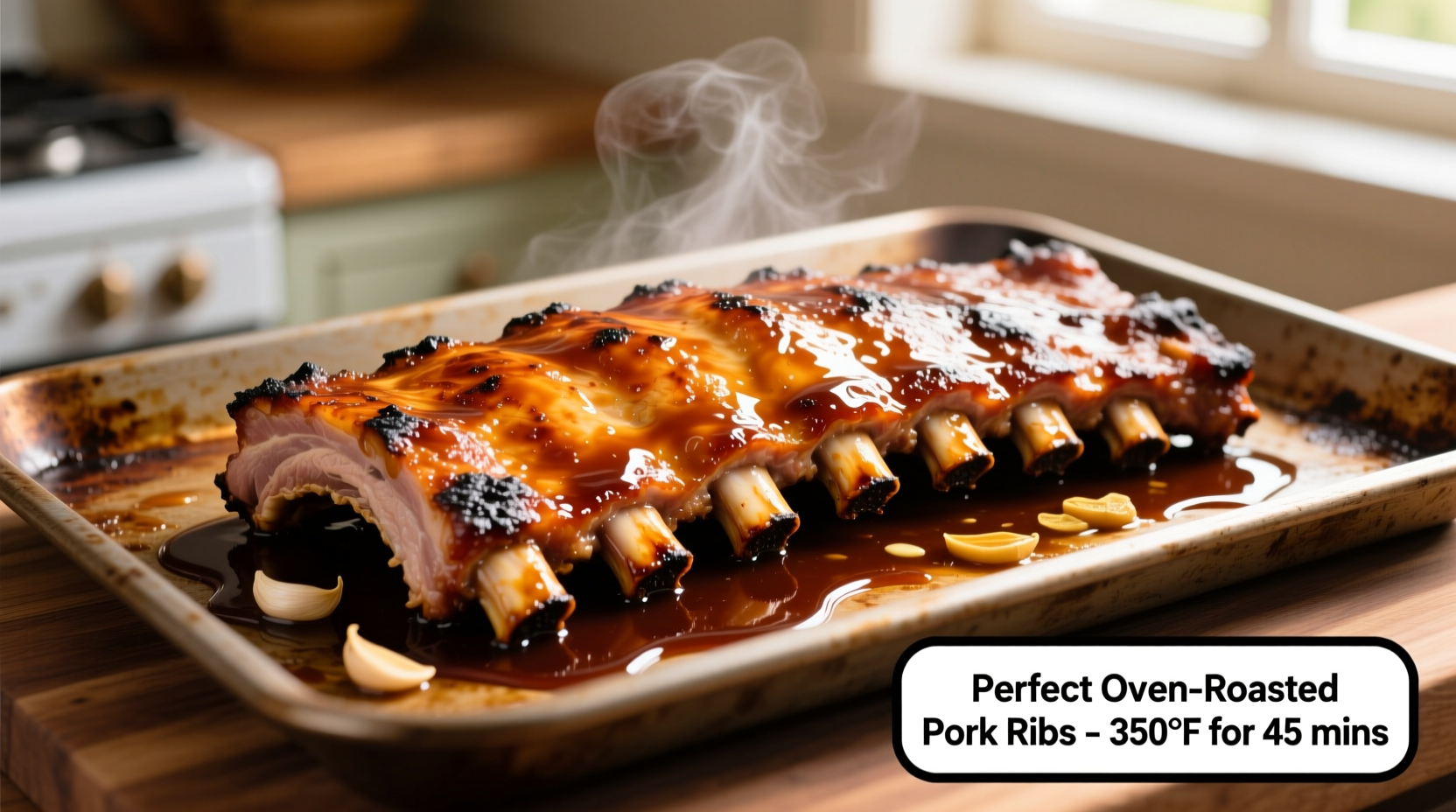For perfectly cooked boneless pork ribs in the oven, preheat to 375°F (190°C), season generously, bake uncovered for 45-55 minutes until internal temperature reaches 145°F (63°C), then broil for 3-5 minutes for caramelized edges. Rest for 10 minutes before serving.
The Science Behind Perfect Oven Ribs
Unlike traditional grilled ribs, boneless pork ribs require precise temperature control to avoid drying out while developing that desirable caramelized exterior. The USDA Food Safety and Inspection Service confirms that pork is safely cooked at 145°F (63°C) with a 3-minute rest period, which maintains optimal juiciness while eliminating food safety risks (USDA FSIS).
Your Complete Boneless Pork Ribs Roadmap
Preparation Phase: Setting Up for Success
Before your oven even heats up, proper preparation determines your ribs' final texture and flavor profile.
Selecting Quality Meat
Choose boneless pork rib rolls (also called "rib tips" or "rib meat") with consistent marbling. These cuts come from the rib section but without bones, typically weighing 1.5-2 pounds. Avoid pre-marinated varieties if you want full control over flavor development.
Dry Brine for Maximum Flavor Penetration
For restaurant-quality results, apply this technique professional chefs use:
- Pat ribs completely dry with paper towels
- Generously season with 1 teaspoon kosher salt per pound
- Refrigerate uncovered for 1-4 hours
This dry brine process allows salt to penetrate deeper than wet brines, seasoning the meat throughout rather than just on the surface.
Cooking Phase: The Temperature-Controlled Method
Essential Equipment Check
You'll need:
- Oven thermometer (critical for accuracy - built-in oven thermometers are often unreliable)
- Instant-read thermometer (Thermapen recommended)
- Rimmed baking sheet with wire rack
- Aluminum foil
Step-by-Step Cooking Process
Step 1: Oven Preparation
Preheat oven to 375°F (190°C) with rack positioned in the center. Place oven thermometer inside to verify actual temperature.
Step 2: Final Seasoning
After dry brining, pat ribs dry again. Apply 2 tablespoons of your favorite dry rub per pound, pressing gently to adhere. For a classic flavor profile, combine:
- 2 parts paprika
- 1 part brown sugar
- 1/2 part garlic powder
- 1/2 part onion powder
- 1/4 part cayenne (optional)
- Salt and black pepper to taste
Step 3: Strategic Placement
Place ribs on a wire rack set over a rimmed baking sheet. This elevates the meat, allowing hot air to circulate completely around for even cooking. For extra insurance against drying:
| Cooking Method | Moisture Retention | Texture Result |
|---|---|---|
| Direct on baking sheet | Low (sits in rendered fat) | Soggy bottom, uneven browning |
| On wire rack | High (air circulation) | Even crispness, better texture |
| Wrapped in foil | Highest | Steamed texture, no caramelization |
Step 4: Precision Baking
Bake uncovered for 45-55 minutes, monitoring internal temperature starting at 35 minutes. The ribs are done when they reach 140-142°F (60-61°C) - they'll continue cooking during the resting phase to reach the USDA-safe 145°F (63°C).
Step 5: The Finishing Touch
Switch oven to broil. Position rack 6 inches from heat source. Broil for 3-5 minutes until edges develop a deep caramelized crust. Watch constantly to prevent burning.

Troubleshooting Common Issues
When Ribs Turn Out Dry
Dryness typically occurs from:
- Overcooking beyond 145°F internal temperature
- Skipping the dry brine step
- Using excessively high oven temperatures
According to the Culinary Institute of America's research, pork loses approximately 10% more moisture for every 5°F above 145°F (CIA Research).
When Ribs Lack Crispness
If your ribs aren't developing that desirable crust:
- Pat the surface extremely dry before seasoning
- Ensure proper air circulation (wire rack is essential)
- Don't skip the broiling step
- Avoid overcrowding the baking sheet
Serving and Storage Guidance
Resting is Non-Negotiable
Let ribs rest for 10 minutes before slicing. This allows juices to redistribute throughout the meat. The FDA confirms that resting time contributes to both food safety and optimal texture (FDA Food Code).
Serving Suggestions
Pair with these complementary sides:
- Creamy coleslaw (cuts through richness)
- Roasted sweet potatoes (balances savory flavors)
- Apple-fennel salad (provides bright acidity)
Storage Recommendations
Store leftovers in an airtight container for up to 3 days. Reheat in a 300°F oven until internal temperature reaches 140°F for best results - microwaving will compromise texture.
Pro Tips for Next-Level Results
Spice Timing Matters
Add sugar-based rubs during the last 15 minutes of cooking to prevent burning. Sugar caramelizes quickly at high temperatures - applying it too early leads to bitter, burnt flavors rather than the desirable sweet crust.
Temperature Monitoring Protocol
Insert your thermometer into the thickest part of the meat, avoiding any fat pockets which give false readings. Check temperature in multiple spots as ovens often have hot spots.
Customization Options
Adapt this method for different flavor profiles:
- Asian-inspired: Swap dry rub for 2 tbsp soy sauce, 1 tbsp honey, 1 tsp five-spice powder
- Caribbean: Use allspice, thyme, scotch bonnet pepper, and orange zest
- Tex-Mex: Incorporate smoked paprika, cumin, and chipotle powder











 浙公网安备
33010002000092号
浙公网安备
33010002000092号 浙B2-20120091-4
浙B2-20120091-4